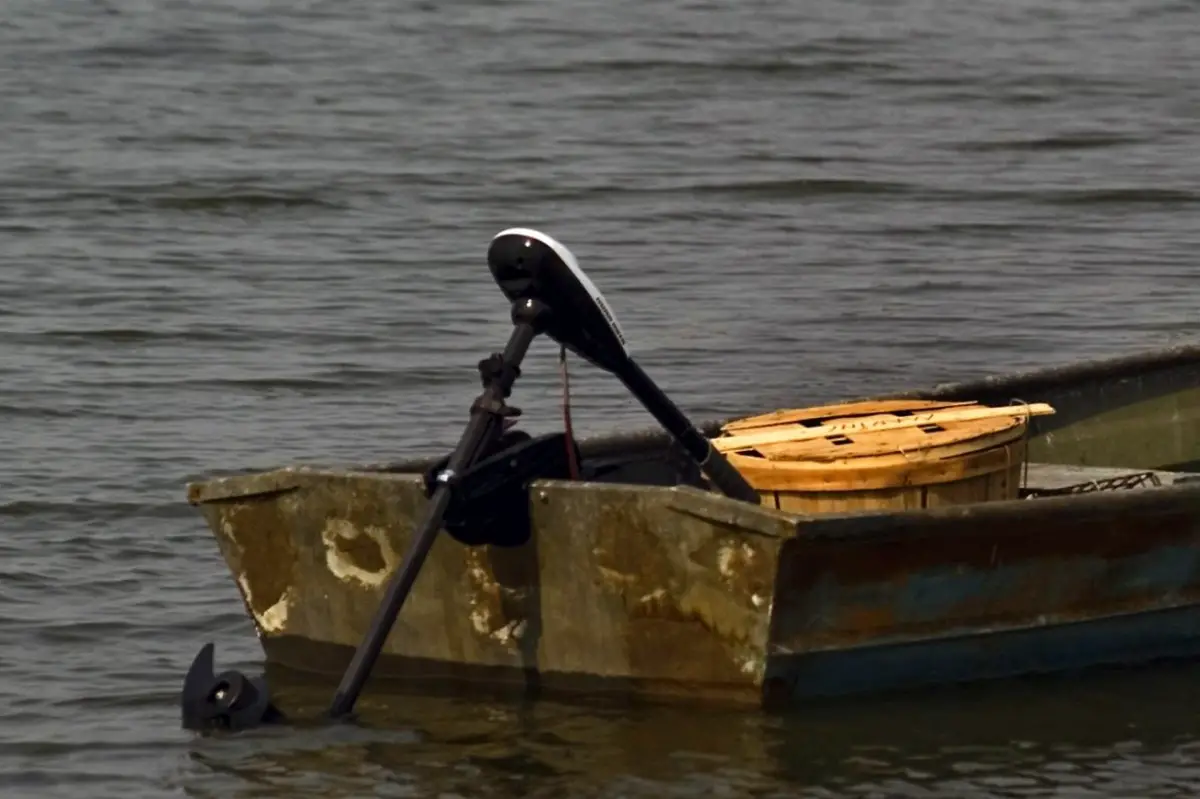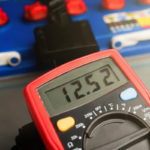Trolling is quite a common practice amongst anglers as the act of slowly moving the bait or lure through the water will make it look more lifelike and, therefore, more appealing to fish. Unfortunately, it’s not easy to do with a regular motor, as it’s more challenging to control the speed. With that in mind, many anglers choose to use trolling motors instead.
An electric trolling motor will overheat out of water because it relies on the water to cool down. Like most marine motors, trolling motors are sealed and designed explicitly for use in water. This means they don’t have the air vents or cooling fins that electric motors have.
In the rest of this article, I explain what a trolling motor is and how it works. Additionally, I detail what causes overheating, how to avoid it, and what to do if overheating occurs. Finally, I offer suggestions for determining the right trolling motor for you.
Note: most links in this article are Amazon.com Affiliate links, see Affiliate Disclosure, thank you.
How Does an Electric Trolling Motor Work?
A trolling motor is a tool used to maneuver a boat when you don’t want to start your boat’s outboard engine. They’re battery-powered and can be controlled with your hand, a foot pedal, or remote control.
An electric trolling motor works using the electricity drawn from your boat’s onboard batteries. The user pushes a button or turns a knob to adjust the speed, sending a signal to the internal unit. Some use foot pedals or remote controls. It should be lifted out of the water to prevent drag and possible damage when not in use.
Trolling motors are not usually used as the primary source of propulsion. Instead, they should stay out of the water until needed.
Depending on the motor, the user can control it by hand, foot, or remote. A propeller at the base of the motor turns in the water, which is how the engine propels the boat forward.
As mentioned, these motors were designed to be used in water, so they don’t have vents or cooling fins. Instead, these motors rely on water to cool them down, so they would overheat quickly if you were to run them on dry land, especially at high speed.
Why Anglers Use Electric Trolling Motors
Electric trolling motors allow anglers to fish methodically and quietly without startling their potential catches. They also allow boats to stay floating in one spot without an anchor, even when fighting against a strong current or gusts of wind.
Electric trolling motors first became popular among anglers in the 1980s. Since then, there have been various technological advancements that have improved the efficiency and ability of the motors. However, electric trolling motors have been around for years, with the first Minnkota trolling motor being conceived in 1934.
The two main types are:
- The bow-mount. Bow-mount motors are more popular because of their maneuverability. Users have more control because the motors pull the boat in whatever direction they choose, rather than pushing it.
- Transom-mount. Transom-mount attaches to the boat via a clamp mechanism and is typically less expensive than bow-mount motors.
Much like any other motor, these have the same basic parts, including:
- A shaft
- Propeller
- Engine
- Battery charger
Trolling motors are named after trolling, the method of fishing where one or more fishing lines with baited hooks are drawn through the water, typically behind a moving boat.
What Causes Electric Trolling Motors To Overheat?
Common causes of overheating are running the engine out of the water, debris caught in the propellers, or something stuck in the motor will cause trolling motors to overheat. In addition, using a small trolling motor for a large boat could also cause it to overheat, as it will need to work much harder.
Another possible cause is that you don’t have good wire connections in your motor.
Whenever the motor is running and doesn’t have the resources or ability to cool itself down, you risk overheating your motor.
To avoid these issues:
- Only run the motor in the water.
- Never run the engine at its top speed for an extended time.
- Check that the wiring is marine-grade and that there are no damaged areas.
- Check the propellers before turning the motor on and during use for debris, such as broken fishing lines.
- Check the motor before and during for debris, such as stray lures or seaweed.
How To Prevent Overheating
Overheating can seriously damage your motor, so it’s best to avoid it. One way to avoid overheating is only to run your motor in water, whether that’s out on the lake during a fishing trip or in a trash can in your backyard, to check your motor function.
The easiest way to prevent overheating is to purchase a better motor. There are many trolling motors on the market, including cheap and low-quality ones.
Use a Deep-Cycle Marine Battery
Another way to prevent overheating is to invest in a proper deep-cycle marine battery. Some boaters use a starting battery, but the plates in these batteries are thinner, and they weren’t built for the workload of a trolling motor.
Starting batteries are destroyed quickly when used in trolling motors, and you wouldn’t want to find yourself with an unusable motor when you’re out on the lake.
This Renogy Deep Cycle AGM Battery from Amazon.com is a solid choice for a strong battery without breaking the bank.
However, if you are looking for a serious investment in a solid battery that is sure to last a long time, try the Optima Batteries BlueTop and Marine Battery, also available on Amazon.com. Though it’s pretty heavy, it has a 120-minute reserve capacity, so you won’t need to worry about getting stuck.
Check out our Review of the Top Electric Trolling Motor Batteries
Ensure Your Motor Uses Marine-Grade Wires
Making sure that you have a marine-grade wire on your boat is another way to avoid overheating. Marine-grade wires have many wire strands that keep the wire in good condition, even with all the boat’s vibrations.
Quality wires ensure that less battery capacity is lost, which limits the possibility of the motor overheating.
What To Do if the Motor Overheats
Even if you’ve done everything right and you haven’t run your trolling motor out of water, there is still a possibility that your motor will overheat.
You can tell that your motor is overheated if:
- Your engine seems to be losing power
- There is a large amount of smoke coming from the motor
- The motor won’t start again after you’ve turned it off
The first thing to do if you notice your motor overheating is to turn it off.
This will prevent a boat fire. Then, unplug the battery and check the propeller to see if there is any debris stuck inside.
Let the motor rest for a while. If it still appears to be damaged the next time you go on a fishing trip, it may be time to invest in a new one.
How To Run Down the Battery for Storage
Because trolling motors don’t have cooling fins, running your trolling motor out of water significantly increases the chances of it overheating.
Running a trolling motor out of water is okay for a very short amount of time.
However, if you want to check your motor or drain the battery, one way to do this without risking damage to your motor is to fill a garbage can with water and run the motor in there.
This Rubbermaid Commercial Products Trash/Garbage Can, or this Carlisle Roun Waste Container from Amazon.com, will do the trick. They’re both big and durable but lightweight enough to move around.
How To Choose the Right Trolling Motor
The right trolling motor for you depends on the size and weight of your boat, as well as the kind of fishing you want to do.
Trolling motors have three power systems: 12, 24, or 36 volts. A 12-volt motor is the least expensive, but it lacks the thrust that the stronger motors have. If you have a small boat, though, the 12-volt motor will probably suffice.
As stated above, there are two main types of trolling motors: bow-mount and transom-mount.
Bow-mounted motors allow for better control and are best for larger boats. A transom-mount works great for positioning and trolling for smaller boats and canoes.
If you opt for a bow-mount, you’ll need to choose between the hand control or the foot control model. Foot control allows for hands-free usage and can be used anywhere on the boat, but it is more prone to malfunction and has a slower response time.
Alternatively, hand control allows for real-time response, but your hand is not always on your rod, and you can only use the motor from the boat’s bow.
If your motor is having issues check out our article Electric Trolling Motor Problems: Top 6 Reasons Why My Motor Is Not Working
Conclusion
Trolling motors are useful fishing tools, but they can have complications and issues that lead to damage, including overheating.
However, if you pick the suitable motor for your boat and use it, take care of it properly and avoid running it out of water, you can use your trolling motor for years to come.




[…] Check out our article Will an Electric Trolling Motor Overheat Out of Water? […]